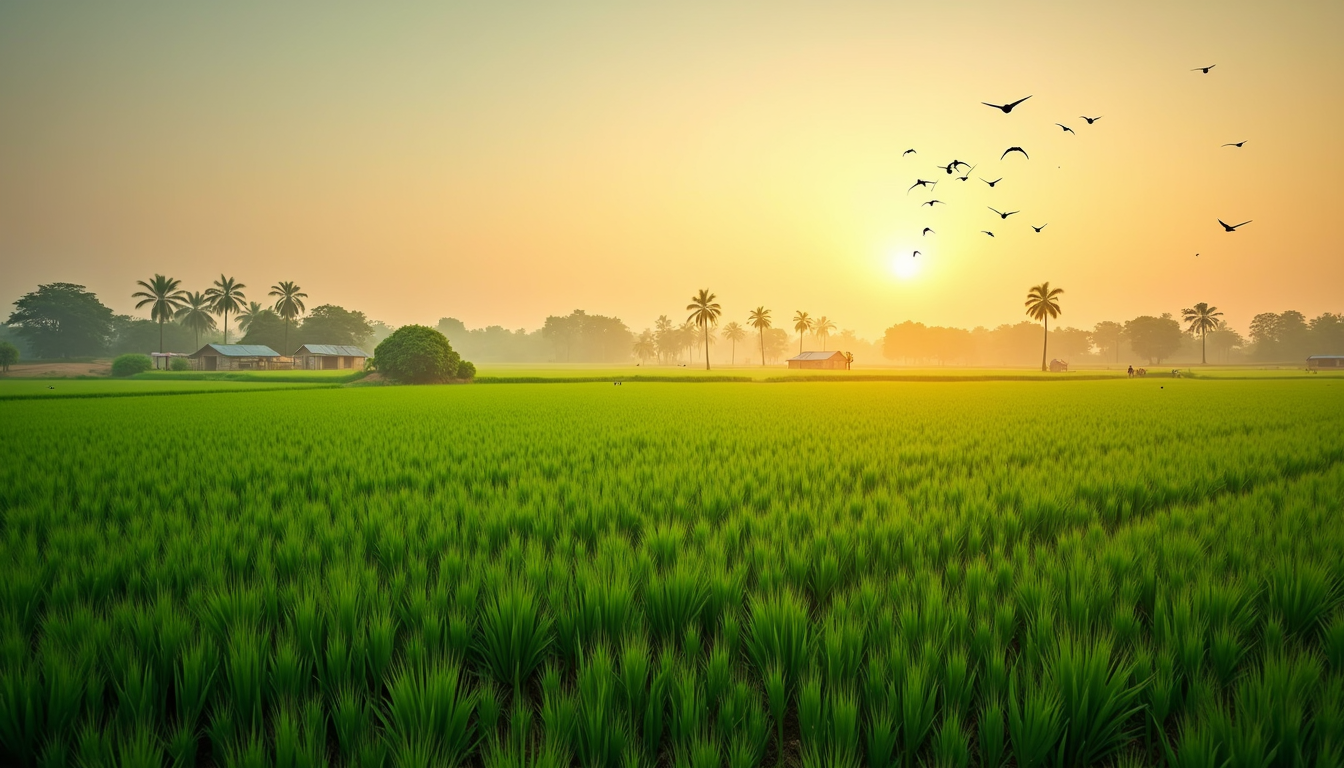Farmland Prices Across India
Take a look at farmland prices across India to start your investment journey today. Farmland has emerged as a strong alternative investment in India. With rising interest from investors, urban professionals, and entrepreneurs, agricultural land is increasingly valued not only for cultivation but also for development potential, eco-tourism, and land banking.
However, the benefits and opportunities vary depending on location, infrastructure development, natural resources, and state-specific regulations.
1. Farmland Prices in North India – High Growth and Strategic Infrastructure
Western Uttar Pradesh – Jewar Airport and Agro-Logistics Hub
Western UP is witnessing rapid transformation, driven by expressways, industrial corridors, and the upcoming Jewar International Airport—one of the largest infrastructure projects in India. This development has created ripple effects in nearby districts like Bulandshahr, Aligarh, Hapur, and Meerut.
Financial Benefits:
- Rising demand for farmhouse plots, cold storage, and agro-logistics
- Strong potential for land value appreciation in proximity to the airport
- Strategic location for agri-processing units and greenhouses
- Enhanced road connectivity through Yamuna Expressway and Delhi–Meerut Expressway
Farmland in this belt is increasingly being viewed as a hybrid investment—for both farming and commercial use.
Farmland Prices In Rajasthan – Investment Corridors Around Jaipur, Dausa, and Lalsot
Rajasthan offers vast land availability and improving infrastructure. While the arid western belt is best suited for solar and grazing, the eastern districts—particularly around Jaipur, Dausa, and Lalsot—are becoming farmland hotspots.
Jaipur Region
With Jaipur being a Tier-2 capital city and part of the Delhi–Mumbai Industrial Corridor (DMIC), surrounding areas such as Bagru, Chomu, and Kalwar are becoming attractive for farmhouse development and eco-retreats.
Dausa and Lalsot
These towns lie on critical transport and industrial routes. The Dausa railway junction, improved road access, and proposed industrial townships have led to increased interest in agricultural plots for future growth.
Financial Benefits:
- High potential for capital appreciation due to DMIC and expressway corridors
- Suitable for organic and horticultural farming with good soil and groundwater
- Interest from investors building weekend homes and agro-tourism projects
- Advantageous for land banking in emerging peri-urban zones
The convergence of development and rural land availability makes this region ideal for long-term, multi-use investment.
2. Farmland Prices Across Central India – Fertile Soil and Sustainable Returns
Madhya Pradesh – Organic Farming and Agro-Economy Potential
Madhya Pradesh is a core agricultural state with large holdings, fertile black cotton soil, and a growing ecosystem for organic and sustainable farming. Districts like Sehore, Hoshangabad, and Vidisha are known for high-yield soy, wheat, and pulses.
Financial Benefits:
- Excellent for large-scale crop cultivation and agri-exports
- Government support for organic and contract farming
- Water availability from the Narmada and canal systems
- Cost-effective land for institutional farming and agri-business setups
Investors looking at sustainable income from cultivation or lease models will find MP to be an economically viable region with long-term productivity.
3. Farmland Prices In Uttarakhand – Scenic Farmland with Tourism and Rental Value
Dehradun and Surrounding Areas
The Doon Valley is an attractive farmland destination due to its mild climate, scenic beauty, and growing urbanization. Areas around Dehradun like Sahaspur, Doiwala, and Vikasnagar offer fertile land and access to city amenities.
Financial Benefits:
- Potential for vacation rentals and homestays
- Strong demand for horticulture and floriculture
- High ROI through eco-resorts and weekend villas
- Ease of access from Delhi NCR, making it ideal for dual-use investments
Dehradun’s education and tourism sectors add to the regional economy, which supports agri-tourism and lifestyle farming.
Nainital and Jim Corbett Belt – Nature-Based Investment Hotspots
The foothills near Nainital and Jim Corbett National Park are popular for their natural landscapes and wildlife tourism. Places like Ramnagar, Kaladhungi, and Bhimtal are witnessing increased interest from hospitality players and investors seeking long-term appreciation.
Financial Benefits:
- Ideal for farm stays, eco-resorts, and event venues
- Potential for fruit orchards, herbal plantations, and greenhouse farming
- Fast growth in tourism-linked land use
- Limited land availability drives up long-term capital value
Investment in this region allows for diversified income—agriculture, tourism, and rentals—all within a protected ecological setting.
4. Farmland Prices Across Western India – Green Retreats and Second Home Markets
Karjat – Weekend Farming and Lifestyle Investment
Located in Maharashtra’s Raigad district, Karjat is one of the fastest-growing farmland destinations for Mumbaikars and Pune residents. Known for its lush hills and riverbanks, Karjat blends agriculture with vacation living.
Financial Benefits:
- Proximity to Mumbai and Pune makes it ideal for weekend farming
- Potential for farm stay rentals, yoga retreats, and wellness centers
- Suitable for horticulture, floriculture, and organic farming
- Development of private farmhouses and nature-centric resorts
Karjat represents a new class of farmland investment driven by lifestyle, not just yield—appealing to young professionals and urban retirees alike.
5. Key Takeaways – Suitable Options For You
Jewar, Western UP: Infrastructure boom; future-ready airport economy
Dausa, Lalsot (Rajasthan): Industrial corridors; land banking value
Dehradun (Uttarakhand): Scenic and productive; agri-tourism potential
Nainital, Jim Corbett: High tourism income and limited land supply
Karjat (Maharashtra): Second home market with farming lifestyle
Jaipur Rural: Peri-urban farming and farmhouse development
Madhya Pradesh: Low entry cost; scalable farming and exports
Conclusion
India’s farmland landscape is no longer restricted to traditional agriculture. Investors are exploring land for its multi-functional utility—from organic farming and orchard development to farm stays, wellness retreats, and land banking.
Areas like Jewar, Dehradun, Nainital, Dausa, Lalsot, and Karjat are no longer just rural outskirts—they are future-facing zones that combine infrastructure, nature, and income-generating potential.
For new investors and seasoned land buyers, understanding the regional benefits, upcoming infrastructure, and natural features of each zone is crucial. Investing in the right farmland today can secure returns in the form of income, capital appreciation, and legacy assets for the next generation.



